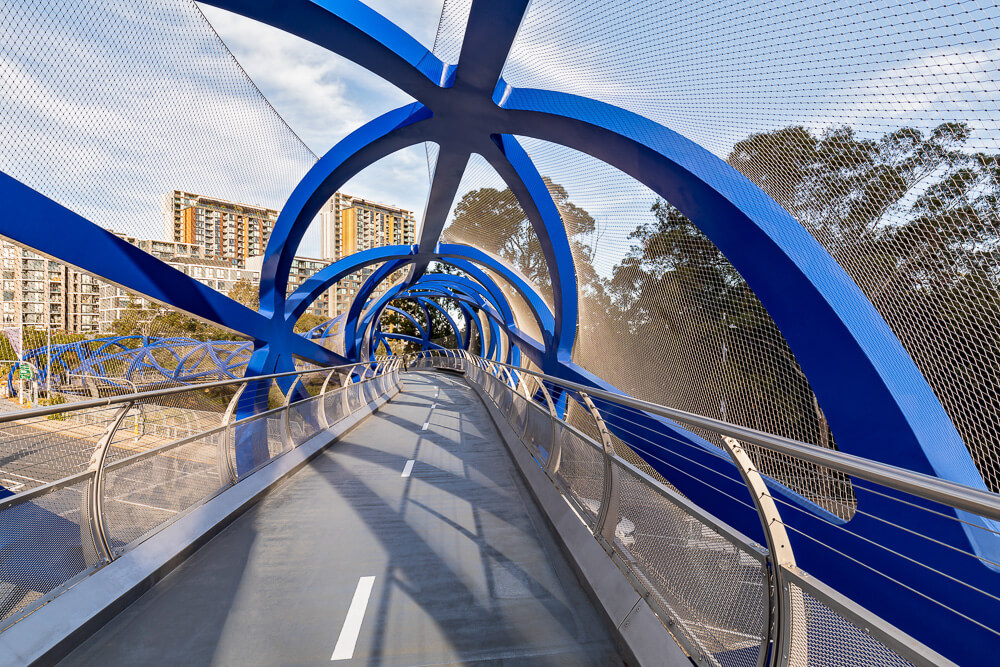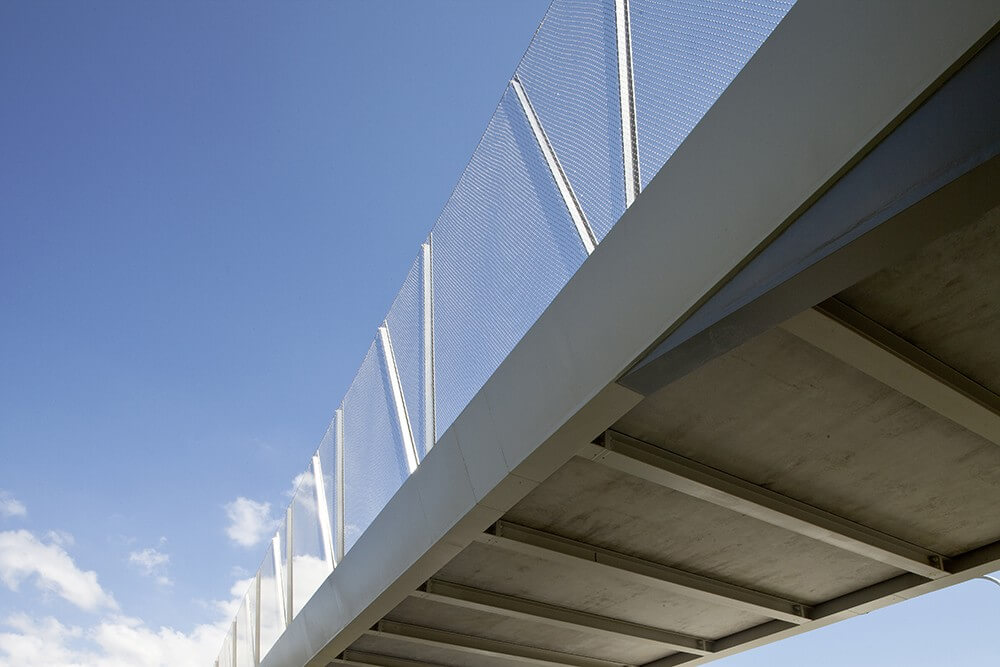Bridge safety screens on footbridges over roads and railway lines help prevent people from falling and objects from being thrown or dropped over the edge.
State and territory governments set the regulations for footbridge barriers, in line with Australian Standard AS 5100 for bridge design.
Here are some of the main issues to consider for bridge safety screens.
Bridge safety screen considerations
- Placement – mesh screens, whether vertical or curved, should be placed behind the traffic barrier railings, i.e. on the outside closest to the road.
- Climbability – the barrier should prevent people from climbing. To achieve this, it should not allow footholds between 150mm and 760mm above the structure floor, nor should it allow a sphere of 125mm to pass through. In the case of stainless steel mesh, the aperture opening should be 40mm in size or less.
- Height of throw screen – where an anti-throw screen is required, it should rise at least three metres above the surface of the walkway or cycle path.
- Post spacing – spacing between vertical support posts should be no greater than three metres.
- Mesh panel sizes – these are typically 50mm x 50mm but may need to be smaller (e.g. 25mm x 25mm) for footbridges over railways.
- Termination of barrier – the screen should extend six metres beyond the road shoulder at each end where possible.
- Mesh panel overlap – where two mesh panels overlap, the size of the lap should be at least 150mm. The panels should also be fixed together with stainless steel ties.
- Tensioning – the barrier should be sufficiently tensioned to prevent any excessive curvature that could compromise safety.

Bridge safety screen design
Installing a compliant barrier on a bridge allows pedestrians and cyclists to safely pass across and enjoy the structure. However, there is no reason it can’t also look great!
Using an unobtrusive screen material such as Jakob Webnet stainless steel mesh allows for good airflow, light and visibility. It creates minimal interference to the bridge’s architectural design and beauty, and maintains any scenic views.
In the case of curving footbridges, the screen material will also need to be flexible enough to conform to the structure’s geometry. Webnet is ideal for achieving this due to its fabric-like, malleable nature.
Here are some examples of bridge safety screens made using Jakob’s Webnet mesh panels.
- Lachlan’s Line pedestrian bridge – for this footbridge, Webnet was used for the anti-throw screens which curve around the outside of the structure. Flexibility of the material was a high priority due to the unique helical shape of the bridge.
- South East Light Rail bridge – Webnet provides a durable and low-maintenance screen on this footbridge on the Sydney light rail network. As for many other bridges of this kind, much of the work for the barrier was done offsite. This helped save time and prevent interruption to the public.
- Albert Cotter pedestrian bridge – this footbridge over busy Anzac Parade with its curves and spirals has a mesh safety barrier with a unique pattern designed to reflect the surrounding trees and parklands.
Contact us about bridge safety screens
Tensile has accumulated many years of experience in the design, engineering, supply and installation of bridge safety screens. Please don’t hesitate to get in touch to find out more.






































